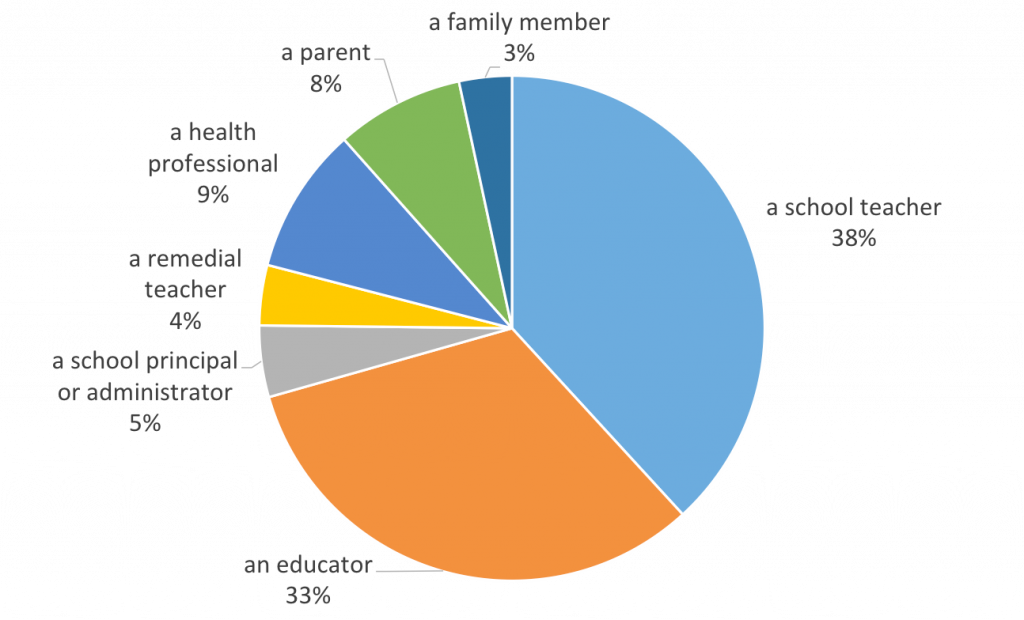For many, there are insurmountable barriers to accessing quality education. These barriers may be physical disabilities, geographical remoteness, social problems or a myriad of other kinds of obstacles, but they have a common result – for all these people, educational opportunities are often limited and inaccessible.
Over the past few years MOOCs have been noted for breaking down the financial barriers to education by offering fee-free courses, however, unbeknown to many, international MOOC platforms pay special attention to accessibility. For the educators creating the Education for All: Disability, Diversity and Inclusion MOOC, accessibility was a particular concern given their focus on disability and on reaching learners from low income countries. We use this blog to tell the story of a few learners on the MOOC who describe aspects of accessibility in the MOOC which are important for their personal circumstances.
For the disability community, the platforms have to comply with strict accessibility regulatory frameworks of their host countries, ensuring that there are subtitles on each video file and that there are transcripts which can be downloaded. Images must also have proper descriptions so that screen reader software can decipher them.
Ari from Johannesburg is blind but he does not let this hinder is thirst for learning. In the past he struggled to find a way to get to lectures and courses offered at the usual educational institutions but is now enthusiastic about MOOCs as they allow him to study. Ari is not the only person with a disability; we don’t know how many people taking the Education for All: Disability, Diversity and Inclusion course are living with a disability, but there have been significant individual stories.
Accessibility in MOOCs is of broader value than only those with a physical disability. Reduced mobility in elderly people often places enormous barriers for accessing education. Molly, a pensioner from Cape Town explained how she attended the University of Cape Town’s annual public education programme, Summer School which offered two weeks of lectures on a range of topics open to all. But the lectures were held on the main university campus, requiring her to drive or take public transport, walk up steps and navigate the lecture theatres. In her eighties, with her physical mobility reduced – both walking and driving – she is limited to the retirement complex in which she lives. But with a computer and an internet connection, she has rediscovered the joys of lifelong learning from her own room, having enrolled and completed over 10 MOOCs on FutureLearn.
Making education accessible is also about geography and location. Alison, an occupational therapist working at a rural hospital told us how she has struggled to find staff development opportunities for her team as it is impractical and expensive to drive hundreds of kilometres for a seminar or training workshop. But she found it very convenient to download video lectures from the Education for All MOOC and then play them offline during a staff meeting. As a result she was able to structure a discussion around the topics raised on the MOOC and implement changes in the outpatients practice, of the hospital where she works, treating families of disabled children.
Alison’ story alludes to another unappreciated value of a MOOC: the flexibility. Working people may be bound by office hours. Others have family responsibilities which mean they may need to carve out study time late at night; or on a weekend. They might choose to spend one evening doing an entire week’s worth on the course, or squeeze in half an hour every day during a lunch break at work. In Alison’s case, she could download videos and then use them at a different time from the course schedule – when it suited her team.
Traditionally, online courses have been mostly accessed using desktop or laptop computers, but not everyone has regular access to a computer. Mobile devices (particularly phones) are more affordable and increasingly ubiquitous, and can be used to access online courses. Nomfundo explained to us how she had participated in the Education for All course, including submitting peer review assignments, and bought a certificate entirely on her smartphone.
The design of Education for All assumes that learners will interact with many others participating in the course, and share experiences. Aside from the discussions on the video lectures and readings, there are structured assignments submitted for review by others on the course (peer reviewed assignments).
I enjoyed the assignments because they gave me the opportunity to design interventions that I could use. Peer reviews offered insight to my thoughts and I learned new strategies I may not have known. I believe I [sic] hands on activities as they enable me [to] understand and these two strategies came in very handy! (post course survey)
The course was aimed at people involved in some way in trying to promote inclusive education – teachers, school administrators, family or community members. The first run of the course (May 2016) reflected the intended target audience.
The free six-week online course – Education for All: Disability, Diversity and Inclusion – from the Disability Studies Division, at the University of Cape Town is offered through the online learning platform FutureLearn. It has been endorsed by the South African government’s Department of Basic Education for teacher professional development, and received very positive reviews on the open MOOC website, Class Central.
Some of the learners’ mentioned in the blog appear in a learner stories video on the CILT website).

